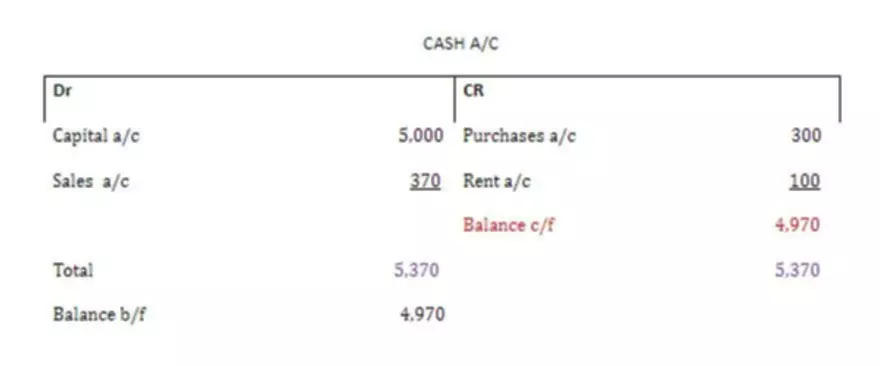Content

If you have visibility into what causes profits, you can add fields based on the decisions you need to make to drive more profits. Harold Averkamp has worked as a university accounting instructor, accountant, and consultant for more than 25 years. He is the sole author of all the materials on AccountingCoach.com. FREE INVESTMENT BANKING COURSELearn the foundation of Investment banking, financial modeling, valuations and more. This has been a guide to the Contribution Margin and its meaning.
- So, in the end it becomes equal to the profit calculated by gross profit way.
- Alternatively, companies that rely on shipping and delivery companies that use driverless technology may be faced with an increase in transportation or shipping costs .
- Further, it’s important to note that all of these costs are the direct costs charged in the cost of goods sold in the profit and loss statement.
- As a manager, you may be asked to negotiate or talk with vendors and perhaps even to ask for discounts.
- Some income statements report net sales as the only sales figure, while others actually report total sales and make deductions for returns and allowances.
- It is just for the convenience of the business activities’ analysts to choose whatever method they desire.
The contribution margin is the amount of revenue in excess of variable costs. One way to express it is on a per-unit basis, such as standard price per unit less variable cost per unit. The contribution margin ratio shows the company what percent of sales income will be available to cover fixed expenses, like office space.
How to Calculate the Contribution Margin
Cost-volume-profit analysis looks at the impact that varying levels of sales and product costs have on operating profit. Investors and analysts may also attempt to calculate the contribution margin figure for a company’s blockbuster products. For instance, a beverage company may have 15 different products but the bulk of its profits may come from one specific beverage. If the contribution margin for an ink pen is higher than that of a ball pen, the former will be given production preference owing to its higher profitability potential. Such decision-making is common to companies that manufacture a diversified portfolio of products, and management must allocate available resources in the most efficient manner to products with the highest profit potential. The _____ represents the amount of each additional sale dollar that contributes towards the payment costs and, ultimately, net profit. Your contribution margins can also be assessed on a product-specific level.

Companies that sell products or services that generate higher profit with lower fixed and variable costs have very good operating leverage. If you’re an owner or CEO of a small or mid-sized business, in order to have your fingers on the pulse of your business’s financials, and closely manage the bookkeeping and accounting, you need actionable financial intelligence. Outsourcing to a professional team that provided management accounting is essential to your business’s success and growth. Both ratios are useful management tools, but reveal different information. Gross profit is your income or sales less cost of goods sold , which are all fixed costs . Contribution margin analyzes sales less variable costs, such as commissions, supplies, and other back office expenses .
Contribution ratio formula
When you run a small business, it’s important to always know your break-even point — the amount of sales needed to pay for all of your costs in a period. Below break-even, you generate a loss; above it, you turn a profit. The contribution margin ratio reveals the percentage of sales that applies to your fixed costs after covering variable costs.
What is a variable budget?
a budget that can be made larger or smaller.
To illustrate how this form of income statement can be used, contribution margin income statements for Hicks Manufacturing are shown for the months of April and May. For example, assume that the students are going to lease vans from their university’s motor pool to drive to their conference. A university van will hold eight passengers, at a cost of $200 per van. If they send one to eight participants, the fixed cost for the van would be $200. If they send nine to sixteen students, the fixed cost would be $400 because they will need two vans. We would consider the relevant range to be between one and eight passengers, and the fixed cost in this range would be $200.
What Is the Difference Between Contribution Margin and Profit Margin?
Firms that use this method make a separate classification of fixed overhead costs lower down in the income statement. Looking at individual products, customers, services or jobs can be especially useful to determine which of your products and services are the most profitable. Note that the overarching objective of calculating the contribution margin is to figure out how to improve operating efficiency by lowering each product’s variable costs, which collectively contributes to higher profitability. Your contribution margin is the amount that your revenue from one sale exceeds, or is exceeded by, the costs you paid to develop that one sold unit.
- Some of the things that will increase the ratio include a decrease in a product’s variable costs, such as when the market price of blueberries falls, for example.
- Contribution margin is defined as the difference between revenues and variable costs.
- We hope this article has helped improve your understanding of the contribution margin ratio.
- This strategy can streamline operations and have a positive impact on a firm’s overall contribution margin.
- Eric is a duly licensed Independent Insurance Broker licensed in Life, Health, Property, and Casualty insurance.
- Contribution margin ratio is an important input in calculation of break-even point, which is the level of sales at which a business is neither making profit nor incurring loss.
That major difference is the exclusion of fixed overhead costs from the contribution margin. This implies that the contribution margin would be greater than the gross margin because of the less costs involved. However, when we exclude fixed costs from the contribution margin, both methods show the same profit in the end. Firms use contribution https://www.bookstime.com/ margin to assess the estimates of how much their sales efforts are fruitful in generating revenues, neglecting the fixed costs which remain unchanged with the volume of sales. However, both methods generate the same amount of profit in the end. So, the difference in gross and contribution margin only helps to add in analysis.
What is the formula for r-squared?
A good contribution margin is all relative, depending on the nature of the company, its expense structure, and whether the company is competitive contribution margin ratio with its business peers. Break-even price is the amount of money for which an asset must be sold to cover the costs of acquiring and owning it.
- This has been a guide to the Contribution Margin and its meaning.
- Also known as dollar contribution per unit, the measure indicates how a particular product contributes to the overall profit of the company.
- This percentage can help determine how a certain product compares to the rest of a company’s offerings, in terms of its profitability.
- The formula equals your break-even point in dollars divided by the price for which you sell each unit.
- On the other hand, the net profit per unit may increase/decrease non-linearly with the number of units sold as it includes the fixed costs.
- For instance, to run a production area there is a minimum number of personnel required who are not directly affected by the production.
